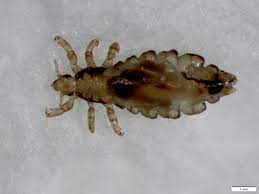Introduction:
As a teacher, you probably never thought that dealing with lice would be a part of your job description. However, when working in an environment with many children, it’s not uncommon for lice outbreaks to occur from time to time. In this article, we will discuss the common challenges faced by teachers during an outbreak and provide practical tips on how to deal with the situation professionally and efficiently.
Understanding Lice:
Lice are tiny parasitic insects that can live in human hair and feed on blood from the scalp. They spread quickly by direct contact and can cause severe itchiness and discomfort. Lice aren’t particularly dangerous, nor are they an indication of poor hygiene. However, their presence can be very distressing for students and their families.
What Teachers Can Do:
1. Educate Yourself: Learn about the basics of lice infestations, including how these parasites spread and the most effective methods for treatment and prevention. Being well-informed will enable you to provide accurate information to parents and students.
2. Create a Protocol: Work with your school’s administration to develop a standard lice protocol for your classroom or school. This might include procedures for identification, assessment, treatment, notification, confidentiality, exclusion rules for infected students until receiving treatment and prevention strategies.
3. Maintain Confidentiality: Respect the privacy of students who have been diagnosed with lice. Avoid using their names when discussing the issue with other students or parents. Informing families privately helps maintain dignity for the affected student while ensuring correct information is shared.
4. Encourage Parent Communication: Encourage parents to proactively check their children’s hair regularly for signs of lice infestation and inform you if anything is found.
5. Teach Students Proper Hygiene Practices: Educate students on the importance of not sharing personal items like combs, brushes, hats, scarves, and headphones. Encourage children to avoid head-to-head contact during playtime or other activities that may facilitate the spread of lice.
6. Maintain a Clean Environment: Regularly clean shared items and spaces in the classroom, such as rugs, pillows, and couches. Lice can survive for a short period away from their human host, so reduce the chances of re-infestation.
7. Keep Calm: It’s essential to remain calm and reassure your students that lice are a common problem that can be dealt with effectively. Avoid creating panic or hysteria, which will only make the situation worse.
Conclusion:
Dealing with lice as a teacher can be challenging and certainly not something we signed up for. However, by educating yourself and your students on proper prevention and treatment methods, creating a protocol for your school or classroom and maintaining open communication lines between teachers, students, and parents – it’s possible to manage outbreaks quickly and effectively. Remember to stay calm, provide support and reassure affected students; together we can keep our classrooms happy and itch-free!





